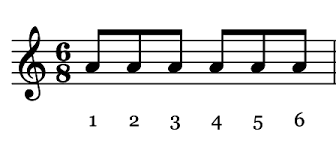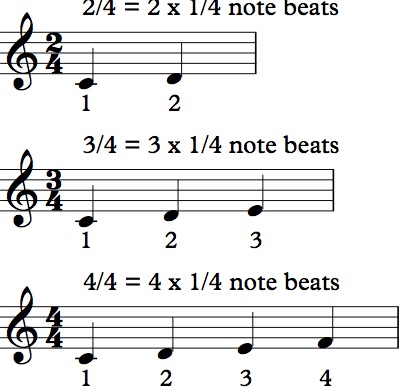MGMT's "Electric Feel" isn't just an indie-dance gem; it's a song that has captivated listeners for well over a decade, becoming a phenomenon that transcends typical pop music. While its catchy melody and laid-back vibe are undeniable, a significant part of its unique charm lies hidden in its rhythmic foundation: its time signature. For many, understanding the rhythmic pulse of "Electric Feel" is like uncovering a secret ingredient in a beloved recipe – it explains why the song feels so distinct and, well, *electric*.
The Enduring Appeal of "Electric Feel"
First released in 2007, "Electric Feel" quickly solidified its place in the indie music canon. It became MGMT's first Australian ARIA top 50 hit and their first New Zealand RIANZ top 40 hit, showcasing its broad appeal. In the United States, the song initially peaked at number 20 on the Bubbling Under Hot 100 Singles chart, but remarkably, it reached a new peak at number 14 almost three years later. This resurgence was largely due to exposure on "The Voice," with a cover by contestant Preston Pohl even debuting at number 21 on the same chart. This demonstrates the song's timeless quality and ability to resonate with new audiences. Beyond its chart success, "Electric Feel" is a masterclass in musical composition. It's written in the key of C Minor and played at a moderately slow tempo, typically around 103 Beats Per Minute (BPM), which is considered Andante. Interestingly, this tempo can also be effectively used at half-time (52 BPM) or double-time (206 BPM), showcasing its rhythmic flexibility. According to Theorytab, "Electric Feel" boasts a higher complexity than the average song in terms of Chord-Melody Tension and Chord-Bass Melody, hinting at the intricate layers beneath its seemingly simple surface. But perhaps the most talked-about element, and the one that truly sets it apart, is its time signature.Decoding the "Electric Feel" Time Signature Mystery
When discussing "Electric Feel," the time signature is often the first point of fascination for musicians and music enthusiasts. While most pop songs comfortably reside in the familiar 4/4 time signature, "Electric Feel" dares to be different.The Dominant 6/4 Time Signature
The prevailing consensus among many, including various sheet music arrangements and analyses, is that "Electric Feel" is primarily in **6/4 time**. What does this mean? In simple terms, it means there are six quarter-note beats per measure. This non-standard time signature is crucial to the song's distinctive feel. As one piece of data suggests, it creates a "bouncing that feels like taking a" leisurely stroll, giving the song a laid-back yet propulsive groove that’s hard to achieve with a standard 4/4 beat. If you listen closely and try to count along, you'll find yourself counting to six over and over. This six-beat cycle, rather than the typical four, gives the song its unique rhythmic character. It’s hard enough to write a "banger" in 4/4 time, the time signature favored by almost all pop artists, but on "Electric Feel," MGMT manages to do it in 6/4, making it a true standout.Alternative Interpretations and Nuances
However, the discussion around "Electric Feel"'s time signature isn't entirely black and white. The provided data reveals some interesting, and at times conflicting, perspectives: * **3/4 Time:** Some analyses, including one that suggests a tempo of 103 BPM (or 34 Measures/Bars Per Minute), identify the time signature as 3/4. While 3/4 (three quarter notes per measure) is different from 6/4, it's worth noting that a measure of 6/4 can sometimes be felt as two measures of 3/4, or vice-versa, depending on the emphasis. * **4/4 Time:** One piece of data surprisingly states the tempo is 120 BPM and the time signature is 4/4, "like most pop songs." This seems to be an outlier and contradicts the majority of analyses, which strongly point to a non-standard meter. It's possible this refers to a specific remix or a misinterpretation. * **Band Members' Perspectives:** Even the members of MGMT themselves offer unique insights: * **Will (the drummer)** says it's "6 1-bar phrases," which could imply a repeated six-beat pattern. * **James (guitar/keyboards)** says it seems "like 2/4 but in three bar phrases." This is an interesting take, suggesting a strong two-beat pulse that repeats over a longer, three-bar cycle, perhaps hinting at the underlying rhythmic groupings within the 6/4 framework.Understanding Rhythmic Groupings: 6/8 vs. 3/4 Analogy
To better understand how different time signatures can feel similar or be perceived differently, consider this analogy: "6/8 is two groups of three, 3/4 is three groups of two, but both have 8 eighth notes." This illustrates that while the notation changes, the total number of subdivisions over a certain period can be the same, leading to a similar *feel* but with different emphasis points. In "Electric Feel," the "feel" of counting to six is paramount, and the phrasing of the vocals in both the verse and chorus strongly supports the six-beat measure, even if the exact subdivision or emphasis might be debated. The crucial point is that the fourth beat isn't strong enough to suggest a new bar in a typical 3/4 feel, solidifying the longer 6/4 measure.The Impact of an "Odd" Time Signature
The use of a non-standard time signature like 6/4 is a significant factor in "Electric Feel"'s distinctiveness and lasting appeal. In a musical landscape dominated by 4/4, venturing into "odd" or "unusual" meters immediately makes a song stand out. * **Unique Groove:** The 6/4 signature gives "Electric Feel" a unique, almost floating or "bouncing" groove that feels less rigid than a typical pop song. This contributes to its laid-back yet danceable quality. * **Musical Sophistication:** It adds a layer of musical sophistication without making the song inaccessible. Listeners might not consciously identify the time signature, but they subconsciously feel its unique rhythm. * **Creativity and Innovation:** It showcases MGMT's willingness to experiment and push boundaries within the pop framework. This is similar to how other artists, like Two Door Cinema Club with their 7/4 time signature in "Do You Want It All," use rhythmic variation to create memorable tracks. "Electric Feel" proves that you don't need a complex, prog-rock-style odd meter to create an impactful and unique rhythmic experience. Sometimes, simply shifting from the ubiquitous 4/4 to a slightly less common meter like 6/4 is enough to create something truly special and memorable.Conclusion
"Electric Feel" by MGMT is a testament to the power of thoughtful musical composition. While its infectious melody and dreamy atmosphere are undeniable, the song's rhythmic backbone, primarily its 6/4 time signature, is a key element of its enduring charm. This unusual measure, debated and interpreted in various ways, contributes to its unique bouncing feel, setting it apart from the vast majority of pop songs. It's a prime example of how a subtle shift in rhythmic structure can profoundly impact a song's character, making "Electric Feel" not just a banger, but a rhythmic masterpiece that continues to captivate listeners worldwide.Final Summary
"Electric Feel" by MGMT is renowned for its unique sound, largely due to its primary 6/4 time signature, which provides a distinct "bouncing" feel unlike most 4/4 pop songs. Despite some varying interpretations, including suggestions of 3/4 or even 4/4, and nuanced insights from the band members themselves, the song's six-beat measure is central to its appeal. This non-standard rhythm, coupled with its C Minor key and 103 BPM tempo, contributes to its higher musical complexity and lasting popularity, making it a standout indie-dance classic.Related Resources:



Detail Author:
- Name : Ms. Rebekah Kling DDS
- Username : kcrona
- Email : mateo.blanda@gmail.com
- Birthdate : 1971-07-28
- Address : 2908 Fabiola Views Suite 381 Schneiderport, ME 02526
- Phone : +1 (352) 981-5282
- Company : Smitham-Bosco
- Job : Sys Admin
- Bio : Labore sit deserunt sit et suscipit dolorem. Quasi quo similique at sit non neque. Ducimus ut vero eveniet dolore dicta.
Socials
linkedin:
- url : https://linkedin.com/in/donnellyv
- username : donnellyv
- bio : Et sint architecto voluptas quae officiis.
- followers : 5972
- following : 917
tiktok:
- url : https://tiktok.com/@donnellyv
- username : donnellyv
- bio : Rerum inventore nihil possimus est aut.
- followers : 3626
- following : 97
twitter:
- url : https://twitter.com/viva2122
- username : viva2122
- bio : Neque eveniet odio aut quisquam nobis aut. Beatae neque deserunt perspiciatis qui quidem consequuntur. Quam et repudiandae atque molestias.
- followers : 5934
- following : 768